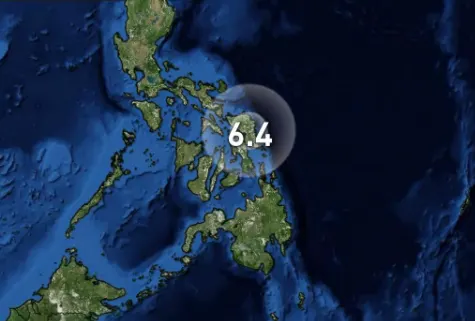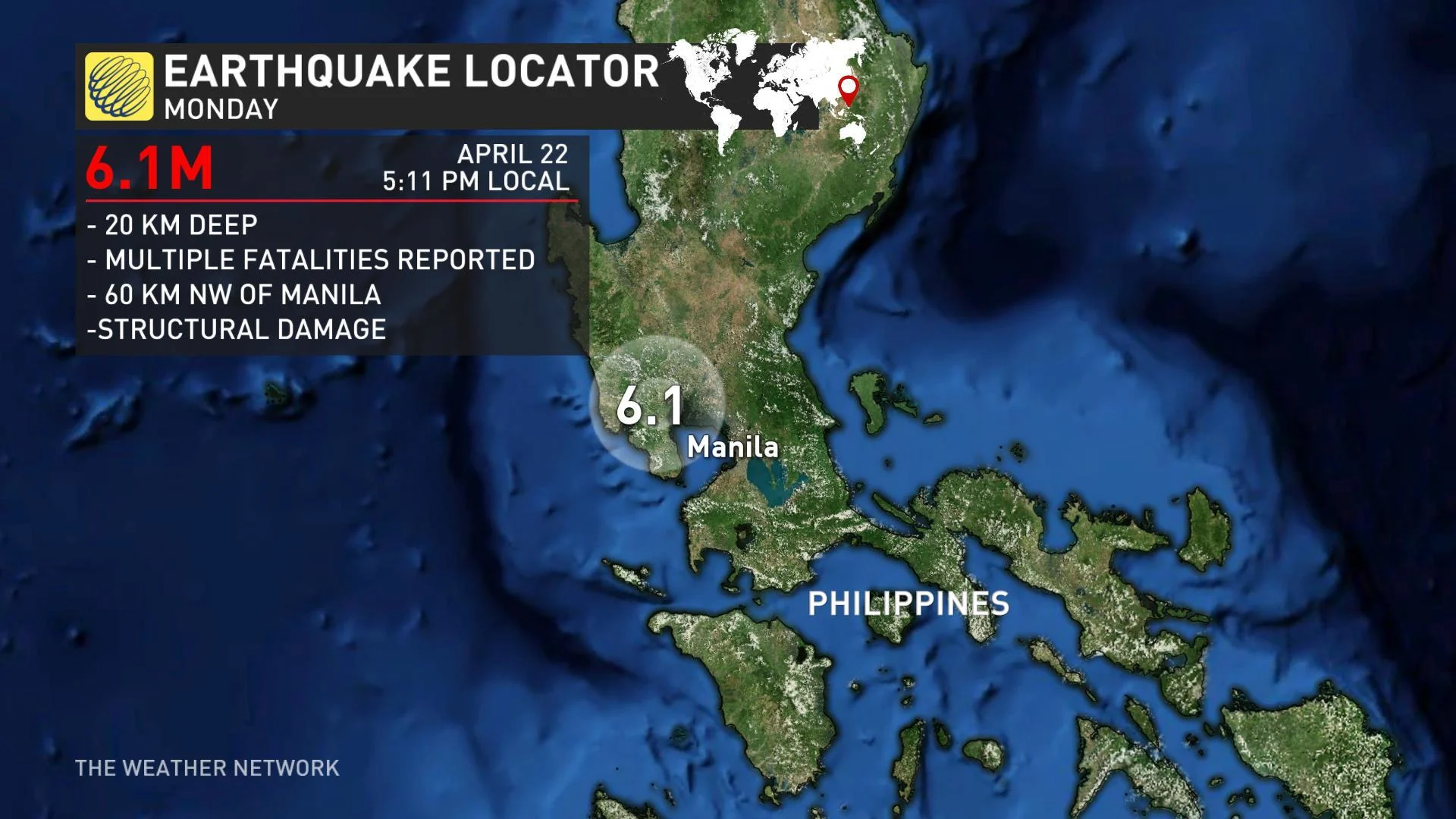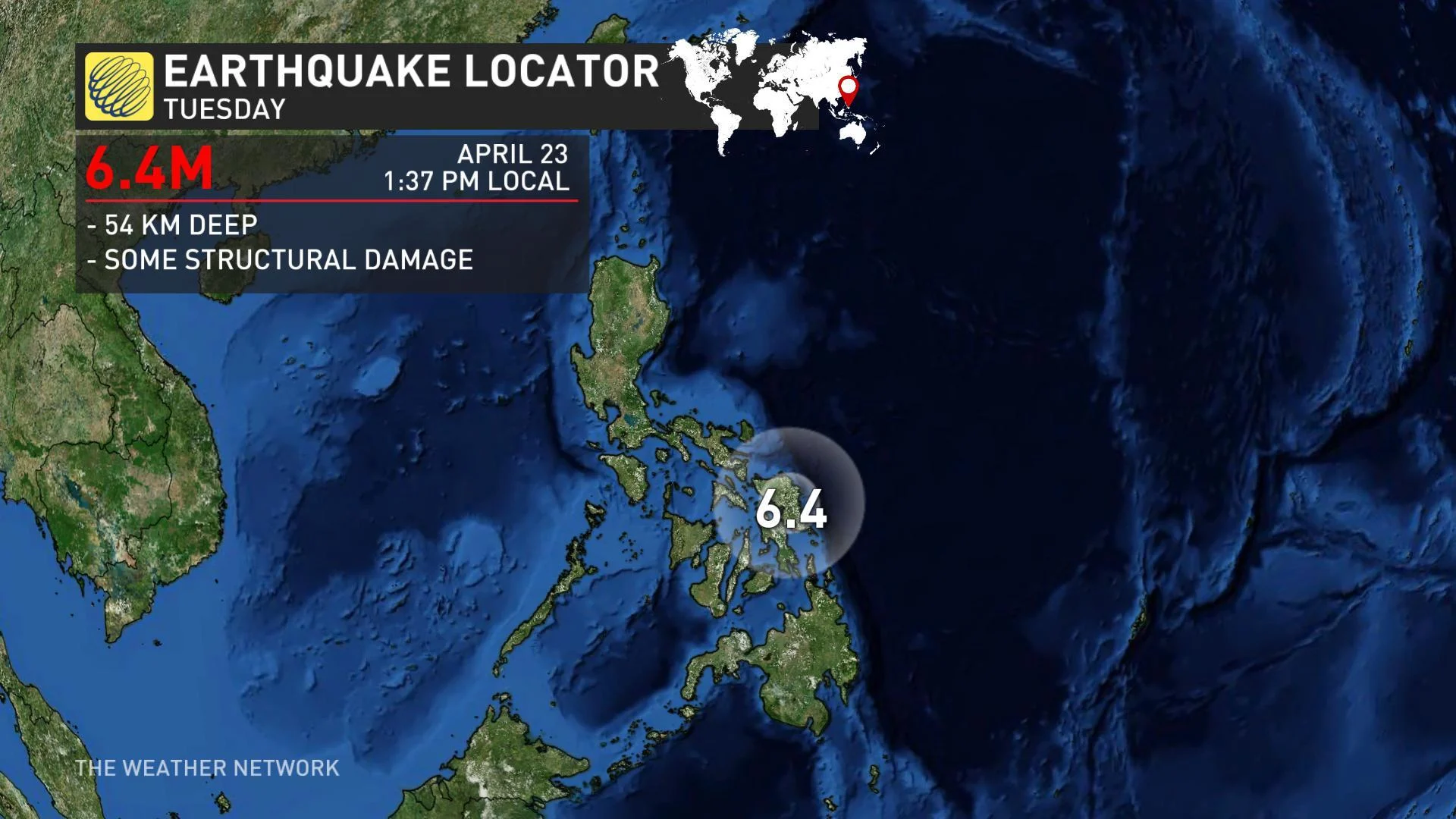
Philippines: Second, stronger quake, day after deadly tremor
A second, stronger earthquake strikes the Philippines Tuesday, but less damage reported
Rescue teams race to find survivors in the Philippines after a strong earthquake hit the country's biggest island of Manila, killing at least 15 people on Monday.
Heavy lifting equipment and search dogs were used early Tuesday as dozens of firefighters, military and civilian rescue teams raced to search through piles of concrete in the town of Porac, about 108 km northeast of Manila, where a 6.1 magnitude earthquake destroyed several buildings on Monday.

Two people were rescued there on Tuesday, adding to seven found alive and four found dead overnight, Reuters reports. That was amid a "mix of rubble and mangled metal that caved in on a ground-floor supermarket in the worst recorded incident." Officials say most deaths were confined to parts of Pampanga province, where building investigations are underway.
The quake, centred about 60 km northwest of the captial city of Manila, prompted thousands of area residents to abandon swaying buildings just after 5 p.m., local time, Monday afternoon.
MUST SEE: WATER STREAMS FROM SKYSCRAPER ROOFTOP POOL IN EARTHQUAKE
Damage was also reported via Twitter at Clark Airport, and several flights into and out of the northern Philippines were reported to have been delayed or canceled.
Renato Solidum, who heads the government's earthquake institute, told the Associated Press that the quake was not strong enough to trigger a tsunami.
SECOND, STRONGER EARTHQUAKE REPORTED TUESDAY
A fresh earthquake of magnitude 6.4 struck the island of Samar in the Philippines on Tuesday, according to the U.S. Geological Survey.
Driven by fears of collapse, people could be seen pouring out from buildings onto the streets, but there were no immediate reports of casualties or damage.

Although Monday's earthquake measured at a weaker magnitude, it was far more destructive and devastating due to where it originated.
"The 6.1 magnitude earthquake struck in an area with looser, softer soil and that resulted in more buildings crumbling and collapsing," explains Weather Network meteorologist Kelly Sonnenburg. "So even though both of these earthquakes struck in the Philippines fairly close, we can not relate or connect the two together."
The Philippines island chain lies along the edge of the Pacific 'Ring of Fire' -- a seismically active boundary surrounding the Pacific tectonic plate and its adjacent plates. The country sees significant earthquake and volcanic activity as a result.
With files from the Associated Press, Reuters.











